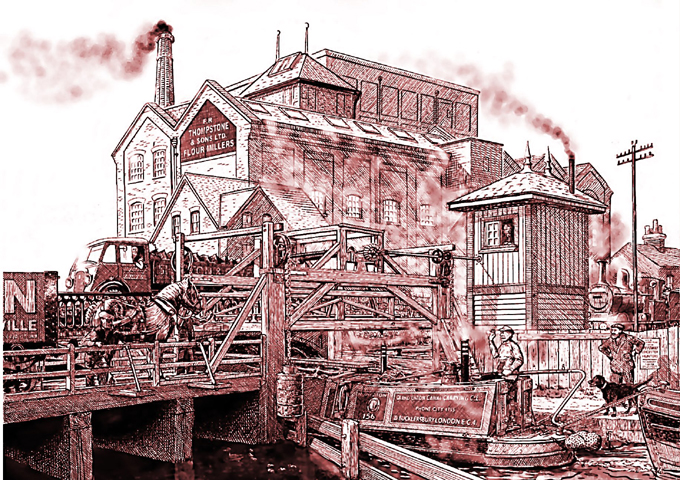

Originally built for the Leicester-Swannington Railway (the first commercial railway built in Leicestershire). Designerd by Robert Stephenson and constructed by Copeland and Harding. Manufactured and constructed in 1834 the bridge was replaced in 1845. The Midland Railway West Bridge branch closed in 1966. (Leicester lost 4 of its 5 rail lines as a result of Dr. Beeching's short sighted closure policy). The bridge had a vertical rise of 3 metres and was powered by steam. It was at one time preserved in the Leicester Museum of Technology. Then transferred to Snibston Discovery Park at Coalville - where the bridge was on display at the entrance to the museum - and in remarkable condition considering it is now 162 years old! Since the closure of Snibston it is feared lost. The mechanics and design of this 1830’s bridge date back to the Middle Ages so to call it Robert Stevenson’s lifting Bridge is a bit disingenuous. None the less, it was a structure that served a specific function daily, for nearly 122 years allowing railway wagons across the Soar navigation to the Pingle and Soar Lane wharf. Pingle Wharf was a short arm opposite the North Mills leat and this became an early transport interchange between rail and narrowboat focusing on coal and building materials. As railways developed to the detriment of waterway traffic, the arm was filled in as the land was worth more as a siding. No locomotive ever crossed the bridge and all traffic was moved by horses attached by harness and chains to the ‘horse hooks’ on either end of the wagon’s chassis. In the last years of operation in the 50’s the horse was replaced by an adapted tractor that delivered the wagons (mostly coal) back and forth across to the waiting Johnson 3f 0-6-0 steam goods loco. The very simple lifting mechanism depended on good old counterbalances with four iron weights – one at each corner that weighed together just slightly less than the platform so operation consisted on lowering the platform to allow a wagon across and winding it up again to reopen the navigation. In this case it was the narrowboat who had priority and the 1937 illustration shows a Town Class ‘Nuneation’ in her GUCCC livery pass smoothly beneath while the railway staff look on. I gather that for cyclists using the towpath it was required to either dismount to walk under or crouch right down as you whizzed through. It is worth noting that the basic design of this bridge - vertical lift with counterbalance weights at each corner - is repeated in the very modern Lowry Centre Bridge on the Manchester Ship Canal. Thanks to Leicester Historian Roger Hutchinson for his composite drawing of what the bridge would have looked like when in use and for his research notes. Roger has published a series of 3 books describing the history of the River Soar in Leicester including 'The Mile Straight - The Fate of the Soar in the centre of Leicester.' More information